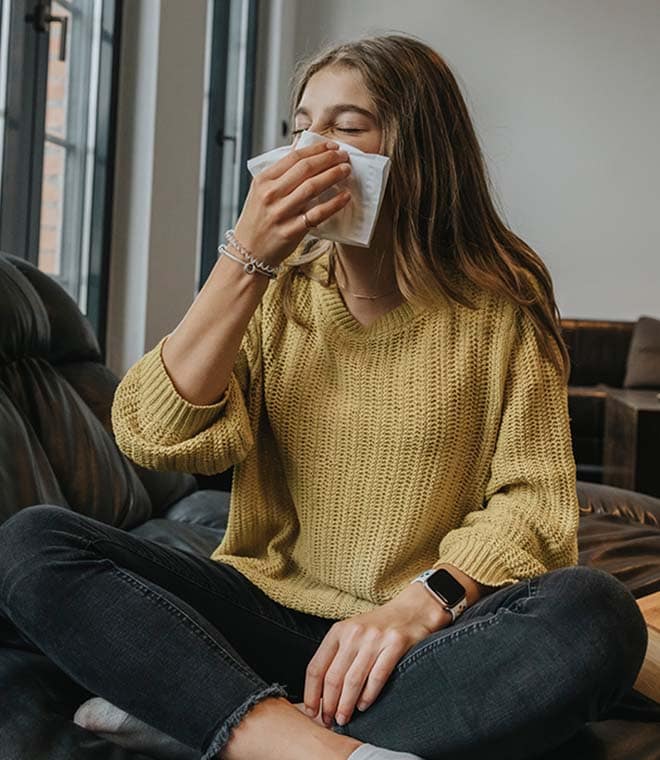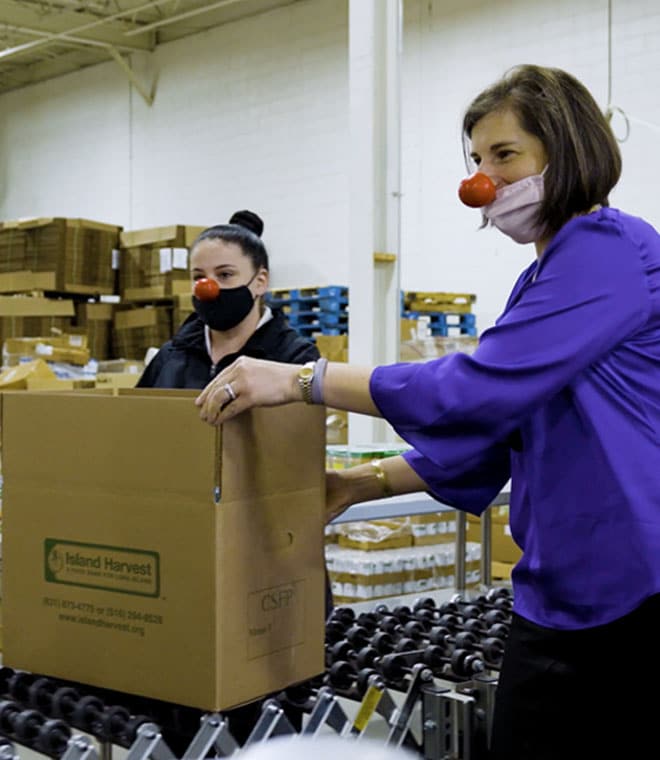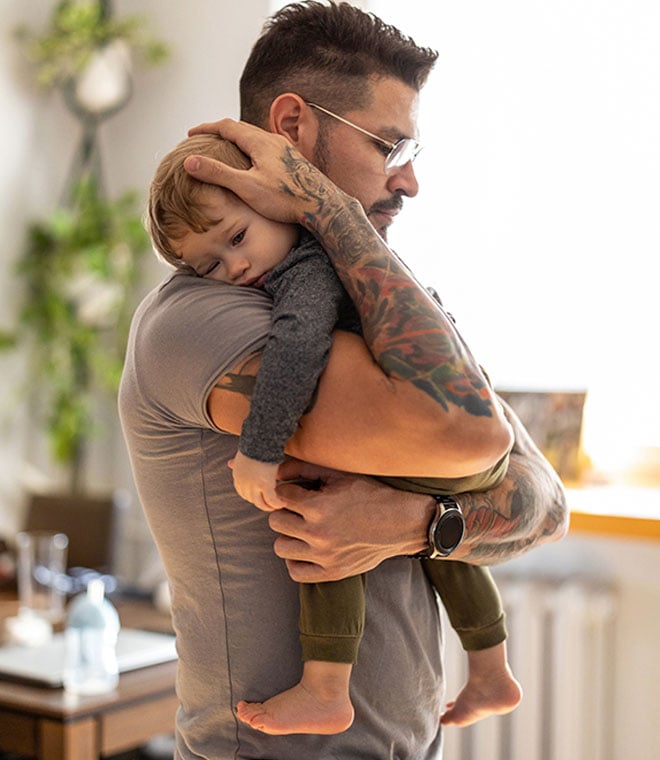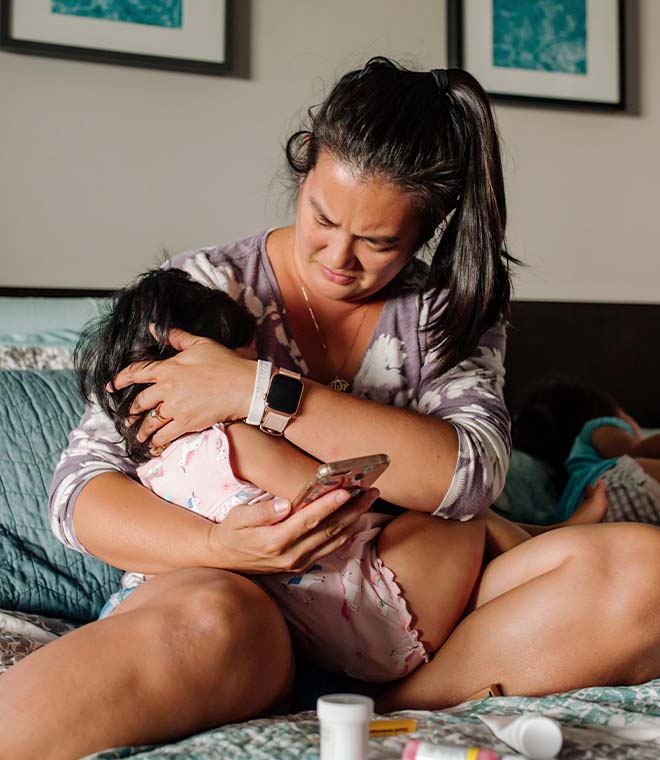Health
Humidifiers for babies and kids: What you need to know
By Sanjay “Jay” Patel, DO, Allergy & Immunology Aug 30, 2023 • 5 min
Humidifiers raise levels of moisture in homes, and they may be beneficial for babies and kids with a variety of illnesses and conditions. To ensure that your child gets the best possible benefits, and to promote safe conditions in your home, keep the following facts about humidifiers in mind.
1. Humidifiers may help with a variety of conditions
Raising indoor humidity levels may be beneficial for babies and kids with the following illnesses and conditions:
- Dry skin and eczema
- Cracked lips
- Nosebleeds caused by dry air
- Sinus problems
- Asthma
- Allergies
- Coughing and congestion due to a cold or the flu
Although many healthcare professionals advocate for the use of humidifiers for these conditions, more research is needed to prove that humidifiers are helpful for these conditions.
2. Put safety first when selecting a humidifier
A cool mist humidifier is generally considered the best choice for babies and kids. Unlike warm mist humidifiers, these models don’t contain heating elements. Instead, they release a cool spray of mist rather than hot steam. As a result, cool mist humidifiers don’t pose a risk for scalding and burn injuries, which may occur if a child gets too close to or knocks over a warm mist humidifier.
As you compare humidifier options, look for a model that has an automatic shutoff. This safety feature allows a humidifier to turn itself off when its reservoir is empty.
3. Size matters
Humidifiers are capable of effectively raising humidity levels in rooms up to a certain size, so it’s important to select a model that’s suitable for the area where you intend to use it. If a humidifier is too small, it may not be effective, and if it’s too large, condensation may form, creating an ideal growing environment for bacteria and mold.
Aim to keep humidity levels in the room at 30% to 50%. More humid conditions can encourage mold and bacteria growth.
4. Keep your humidifier clean and well maintained
To maintain optimal indoor air quality, follow the cleaning and maintenance recommendations provided by the humidifier manufacturer. In general, you should clean a humidifier prior to the first use and then every two to three days when you’re using it regularly. Proper cleaning helps reduce the risk of mold and bacteria growth, which can reduce air quality in the room.
Some humidifiers have filters that capture fine particulates. If you choose a model with this feature, the filter will require cleaning on a set schedule, and it may need to be replaced periodically to keep the humidifier sanitary and working properly.
5. Use filtered water
Tap water isn’t the best choice for filling your humidifier as it usually contains minerals that can promote the growth of microorganisms. It can also cause mineral buildup inside the unit. Use distilled water in your humidifier. You can also run boiled tap water through a home water filtration system before you add it to the unit.
6. Choose the right position
Where you place a humidifier in your child’s room matters. Try to keep the humidifier about three feet away from your child’s bed or crib. It’s also important to keep it in a location that’s out of reach of your child.
7. Consult your healthcare provider before using a humidifier
While humidifiers may provide many benefits, they’re not ideal for everyone. Talk to your child’s healthcare provider before using a humidifier. They can provide you with advice about humidifier usage and recommend additional treatments and interventions to help your child feel better.
Certain lung conditions and allergy/sinus problems may actually worsen with humidified air. If your child has any chronic conditions, it’s important to consult with your healthcare provider before routinely using a humidifier. If you notice symptoms worsening when using one, discontinue use and consult your child’s provider.
Updated August 2023.
Sources:
- https://www.mayoclinic.org/diseases-conditions/common-cold/expert-answers/cool-mist-humidifiers/faq-20058199
- https://www.epa.gov/indoor-air-quality-iaq/use-and-care-home-humidifiers
- https://www.cdc.gov/antibiotic-use/colds.html
- https://medlineplus.gov/ency/article/002104.htm
- https://www.mayoclinic.org/diseases-conditions/common-cold/in-depth/humidifiers/art-20048021
- https://www.chop.edu/news/health-tip/vaporizer-or-humidifier-which-best
- https://www.healthychildren.org/English/health-issues/conditions/flu/Pages/caring-for-Your-childs-cold-or-flu.aspx



